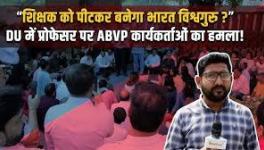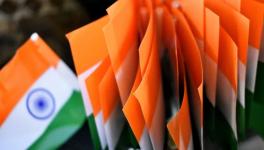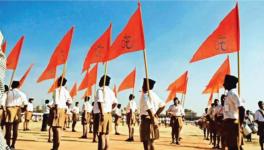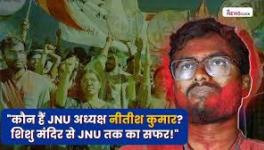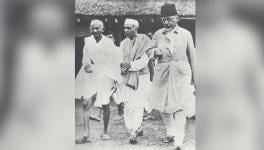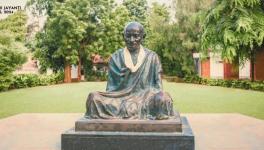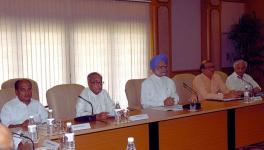Why Savarkar Cannot be Placed Alongside Bhagat Singh
September 28 is celebrated as the birth anniversary of Bhagat Singh by political organisations across the ideological spectrum. This celebration by the right wing is fairly recent and is a part of their campaign for projecting themselves as “nationalists”.
One of the main protagonists of the right wing’s promotion of its version of nationalism is Vinayak Damodar Savarkar. Savarkar has been in the limelight after the massive victory of the right wing in the 2014 General elections. Savarkar is the main pillar on which their quest to prove their participation in the freedom struggle rests. He is also a key figure in their pursuit for delegitimising the contribution of the Indian National Congress and its leaders like Nehru. Savarkar has been eulogised to such an extent that he is being portrayed as either assisting important leaders like Netaji Subhash Chandra Bose or being a mentor to young revolutionaries like Bhagat Singh.
The rise of religious nationalism has tried to gain mainstream legitimacy with the co-option of different freedom fighters who can either be placed against Nehru or who do not fit within the secular and non-violent ideology of Mahatma Gandhi. The most vigorous and staunch co-option has been that of Bhagat Singh. Bhagat Singh was not a part of the Indian National Congress and supported radical leaders of the Congress. More importantly, he remains one of the most widely recognised youth icons across the country. The choice of Bhagat Singh also seems to be potent for the Hindutva sympathisers, for his mainstream projection as a violent young revolutionary while his intellectual side is not well known.
This co-option is done through various means ranging from frequent odes to Bhagat Singh in the speeches of their supreme leaders to ubiquitous use of his pictures in posters of their student wing, Akhil Bharatiya Vidyarthi Parishad. The most recent attempt being the installation of the busts of Bhagat Singh and Netaji Subhash Chandra Bose alongside Savarkar on a pillar at the Arts Faculty, Delhi University. Such attempts are being substantiated with some misinformation about Bhagat Singh.
This misinformation includes the portrayal of Savarkar as a mentor to young Indian revolutionaries. Several unsubstantiated facts are being spread: that Bhagat Singh translated Savarkar’s book Sipahi Vidroh; that the revolutionaries sought Savarkar’s advice before killing Saunders; and that Savarkar’s Hindu Pad Padshahi was a must read for revolutionaries.
These “facts” are completely devoid of any historical evidence and are absolutely false. No such translation of Savarkar’s book, as claimed, has been found or even published. The only books translated by Bhagat Singh were: the autobiography of Irish Revolutionary Dan Breed and Sachindranath Sanyal’s Bandi Jivan. In fact, there is no evidence that Bhagat Singh ever met Savarkar. Neither Bhagat Singh nor his compatriots or any other legitimate source of the time mentions anything about a meeting of the revolutionaries with Savarkar.
Bhagat Singh’s views, his ideology, is quite clear from the letters he wrote to his family, friends, British authorities, Courts and his writings published in various journals of the day. If we juxtapose the misinformation with these writings, we would find that Savarkar’s place in Bhagat Singh’s life was limited only to two books authored by Savarkar: Hindu Pad Padashahi and Sipahi Vidroh. The book Sipahi Vidroh (about the sepoy mutiny) is the only book authored by Savarkar that is mentioned in the list of books read by Bhagat Singh. This list is collated by researcher and historian Jagmohan Singh, who also happens to be a nephew of Bhagat Singh. The other book, Hindu Pad Padashahi was also read by Bhagat Singh as it finds a mention in Singh’s notes from the jail.
However, these links alone cannot establish that Savarkar was a mentor to Bhagat Singh or that they were both part of the same league as revolutionaries. Savarkar’s book Sipahi Vidroh or his name is nowhere mentioned in the letters and articles written by Bhagat Singh. The book is one among the hundreds of books read by Bhagat Singh and if one goes through Singh’s own writings, it would be clear that he did not agree with the opinions of several authors and even criticised them in his writings. A notable example is Lala Lajpat Rai whom Bhagat Singh criticised by publishing a pamphlet titled “The Lost Leader.”
The other link about the mention of Hindu Pad Padashahi is limited to a few pages of his Jail diary, where he selects a few quotes about martyrdom from this book. Perhaps, this diary was like a scribbling pad for Bhagat- he used to write whatever he read and scribbled quotes such as “Money is the Honey of Mankind- Dostoevsky.” Such mentions clearly cannot be seen as Bhagat’s endorsement to such thoughts. The diary is just a compilation of his notes from his reading of hundreds of books in jail; and unlike his own articles, letters and statements, do not reflect anything about his own personal ideas. There is also no evidence, either in Bhagat Singh’s writings or in the autobiographical accounts of his compatriots, to establish the claim that Hindu Pad Padashahi was a must read among the revolutionaries.
As against what the right wing wishes to portray, Bhagat Singh’s writings show that he was a socialist who also believed in nationalism (rather than internationalism) to some extent. His writings clearly show that he did not share his idea of nationalism with Savarkar. Bhagat Singh supported the idea of a “common nationalism” which according to him preached equal respect for all religions, as opposed to Savarkar’s idea of subsuming all kinds of identities under one Hindu identity. Bhagat Singh supported the view that religion is a private matter and should be left to individuals without any political interference. He wrote this in an article published after the Kohat riots:
The martyrs of 1914-15 had separated religion from politics. They understood that religion is a personal matter which needed no interference from others. But they all agreed that religion should not enter politics because it does not allow people to work together for a common cause. This was the reason why during the revolution called by the Ghadar Party, people remained united. Here Sikhs, Hindus and Muslims were put on gallows for the cause of revolution.
This makes it quite clear that it was never the likes of Savarkar, but the Ghadarites and the Russian revolutionaries who influenced Singh the most. The Ghadarites, especially Ghadarite Kartar Sarabha, whose photograph he always used to carry in his pocket during his student years, are frequently mentioned in his writings along with Russian revolutionaries like Lenin.
It was the Ghadar movement which gave a secular and patriotic outlook to Bhagat Singh, while socialist writings from thinkers like Lenin and Trotsky formulated his ever-evolving economic ideology.
Thus, Bhagat Singh actually belonged to the ideological camp which the right wing has been strongly opposing since forever. Despite their hatred against these ideologies, the right wing still tends to co-opt Singh and exploit his violent outlook just to feed into its own propaganda of hypernationalism. It is not surprising to see that the right wing never celebrates his writings on secularism or economic equality etc and restricts its celebration of Bhagat Singh to his edited pictures portraying him as a violent young man brandishing a pistol in one hand and holding the tricolour in the other.
Get the latest reports & analysis with people's perspective on Protests, movements & deep analytical videos, discussions of the current affairs in your Telegram app. Subscribe to NewsClick's Telegram channel & get Real-Time updates on stories, as they get published on our website.










